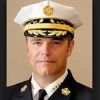Editor’s Note: Chief Adam K. Thiel urges us to keep a sharp eye out for those who would do us harm, and to understand what do in a potentially violent setting.
This story from Ireland is a great reminder that, despite being consistently rated the “most trusted profession” (career or volunteer) in surveys taken across the globe, firefighters can still find themselves exposed to violence of a human nature.
Like many of our FireRescue1 readers, there have been several occasions during my fire and emergency services career where I found myself and my crew in dangerous and violent situations. Right or wrong, we sometimes made a conscious decision to do so; and sometimes it took us by surprise.
Just today, some of my own members found themselves in a difficult situation on the scene of an otherwise “routine” incident. Fortunately, nobody was hurt and law enforcement back-up was quick to arrive.
No matter where or how your fire department operates, it’s critical to make sure that everyone is trained on your SOPs/SOGs for handling violent incidents.
Recognizing the danger to firefighters, and unfortunate frequency, of these events, the National Fallen Firefighters Foundation made Violent Incident Response one of its 16 Firefighter Life Safety Initiatives.
Take some time to review the NFFF White Paper on this important topic, as well as discuss your own department’s protocols and procedures for staying safe during — or even better, staying out of — these situations.
As that wise captain told me years ago: “Keep you eyes up and your head on a swivel!”












